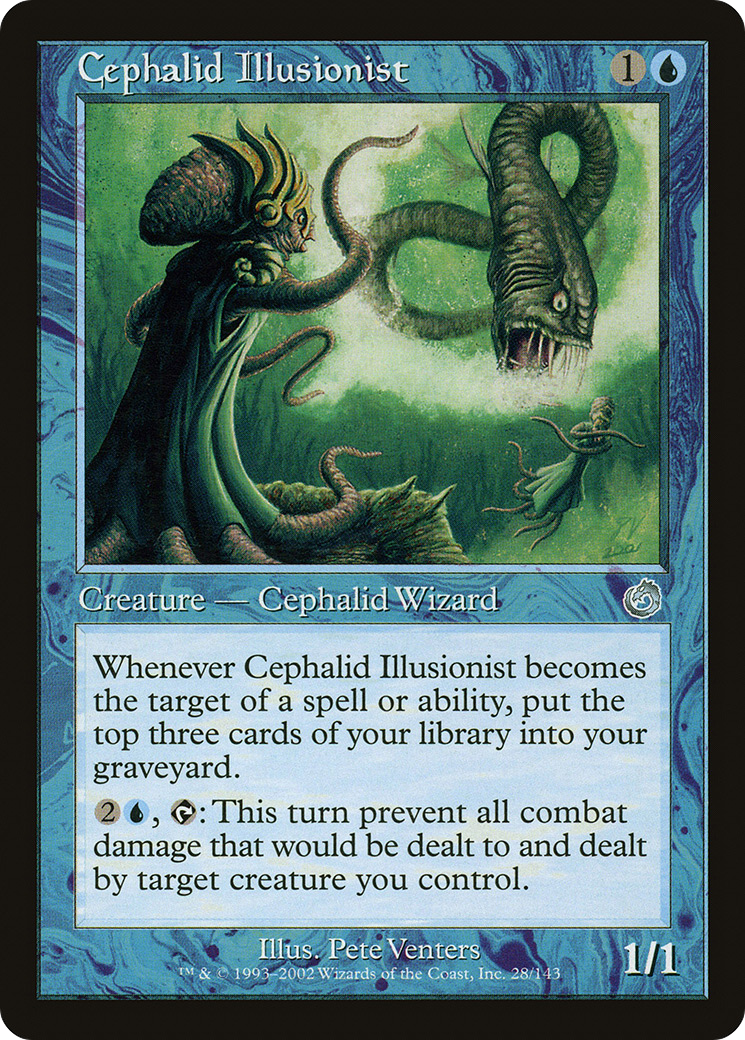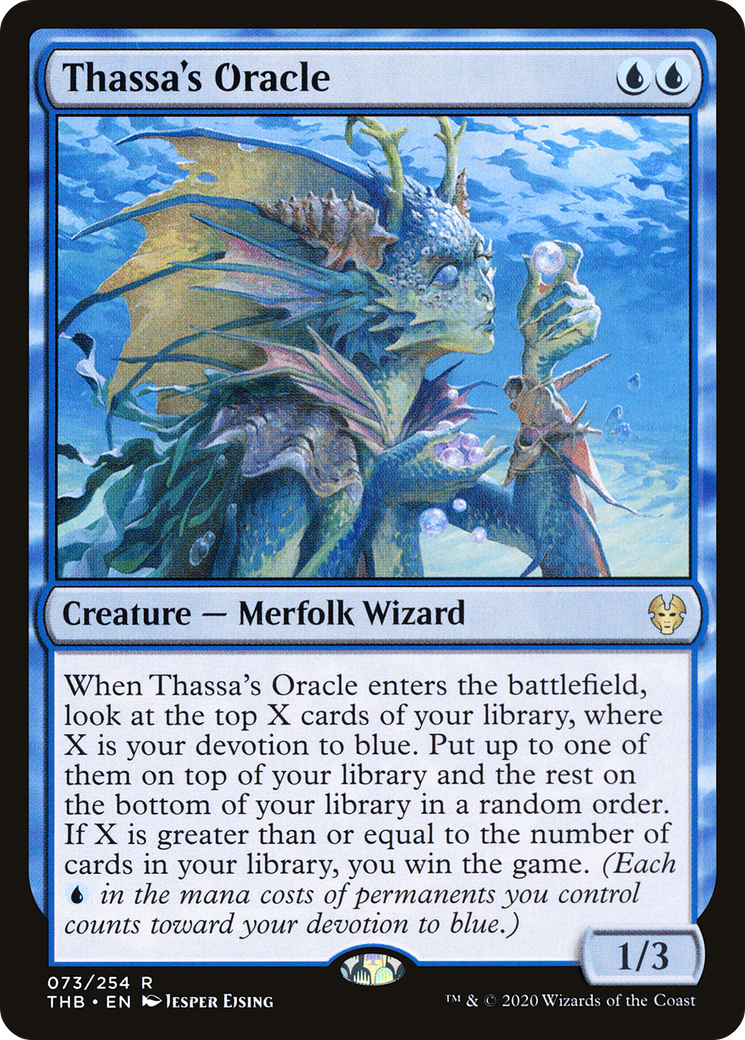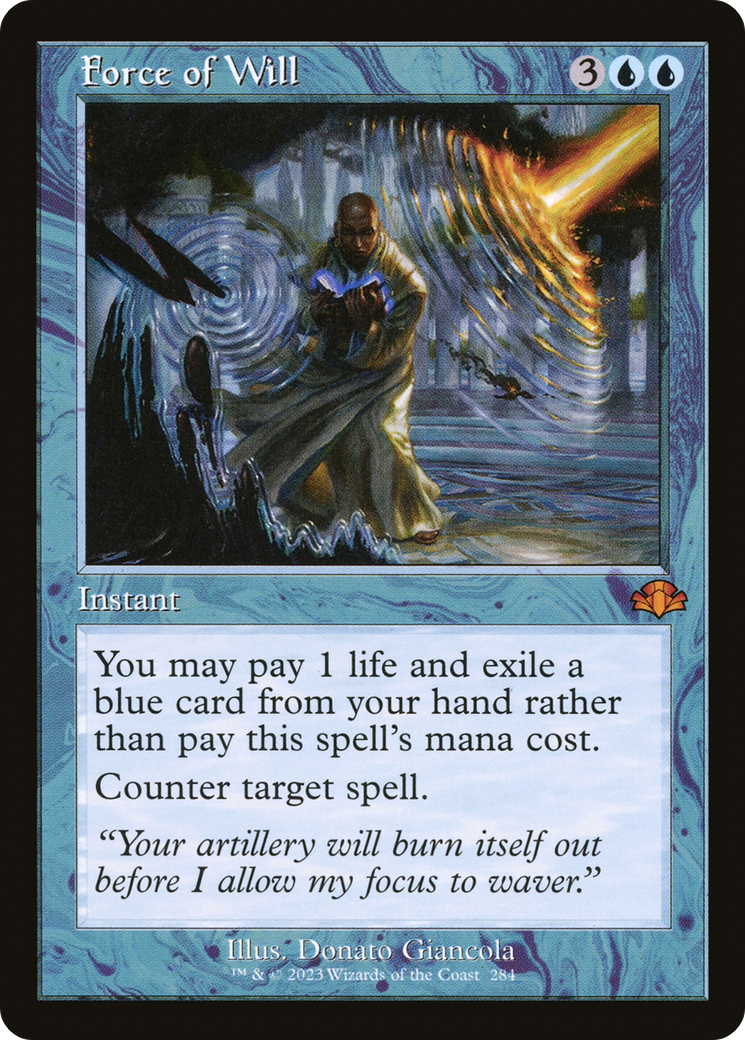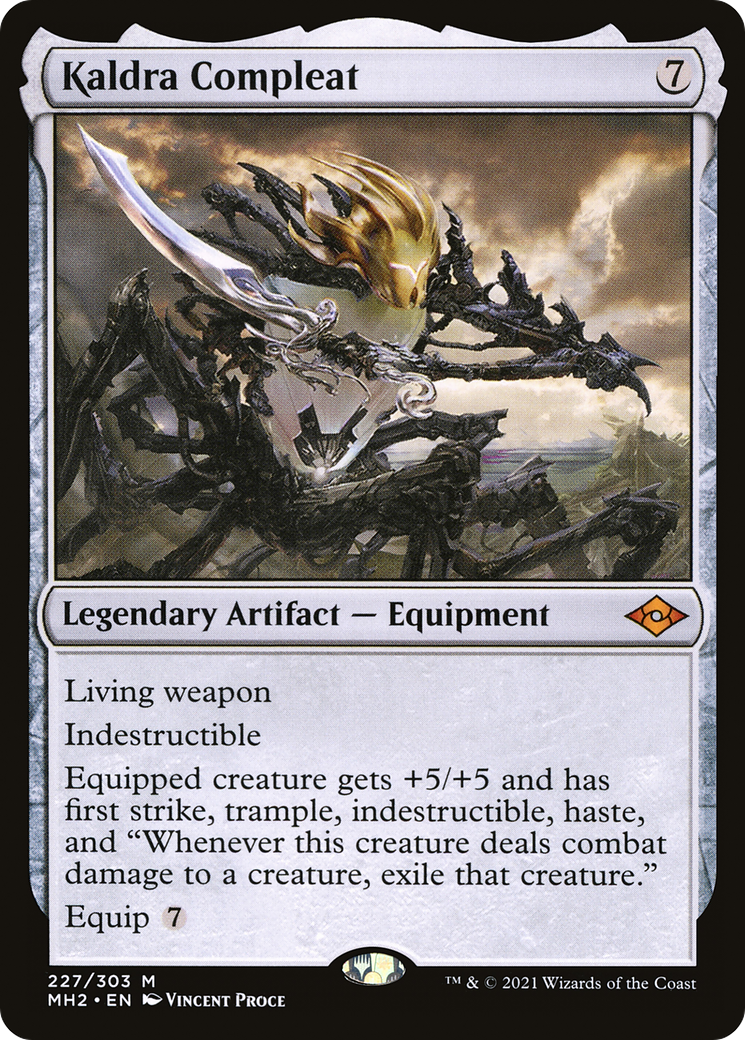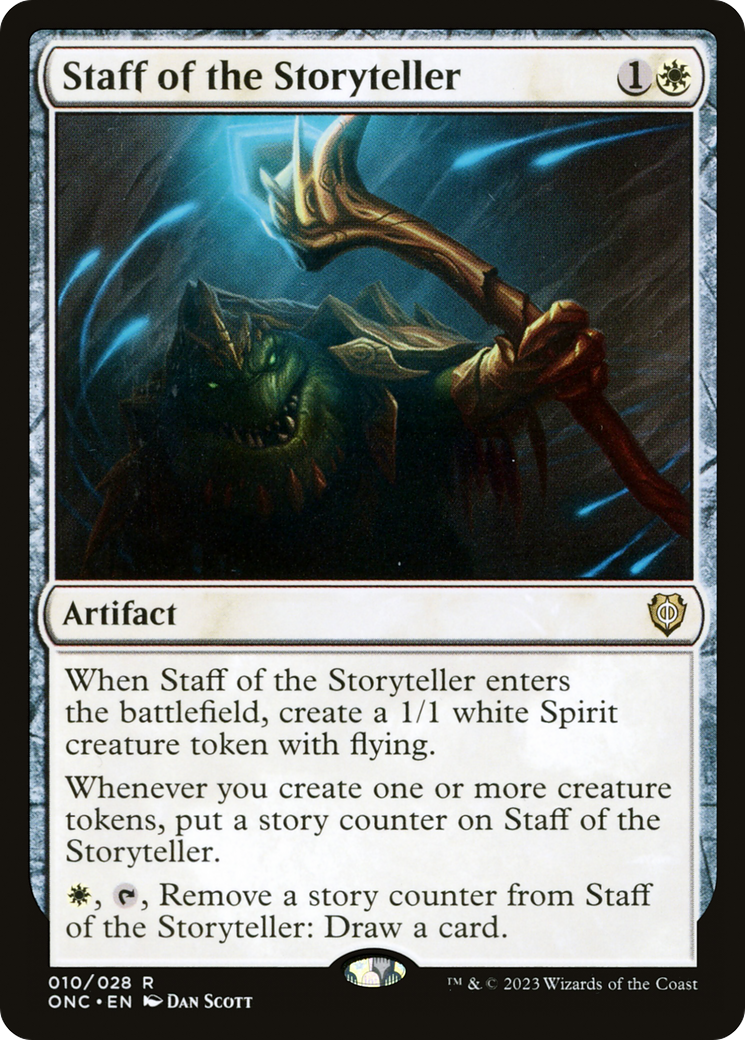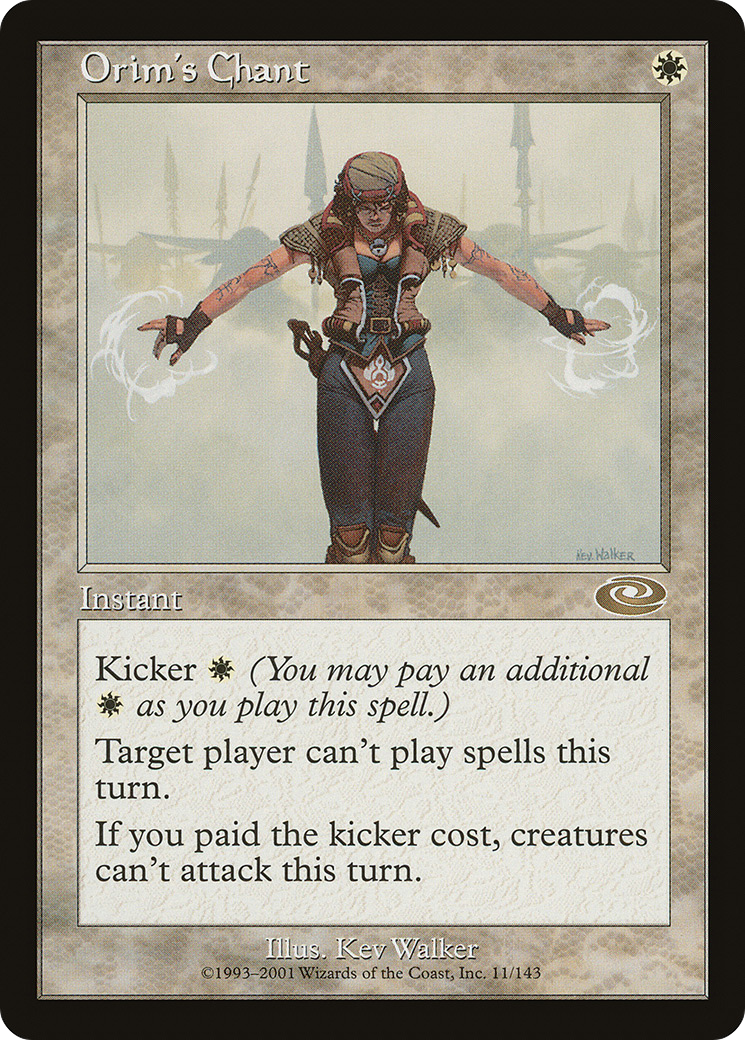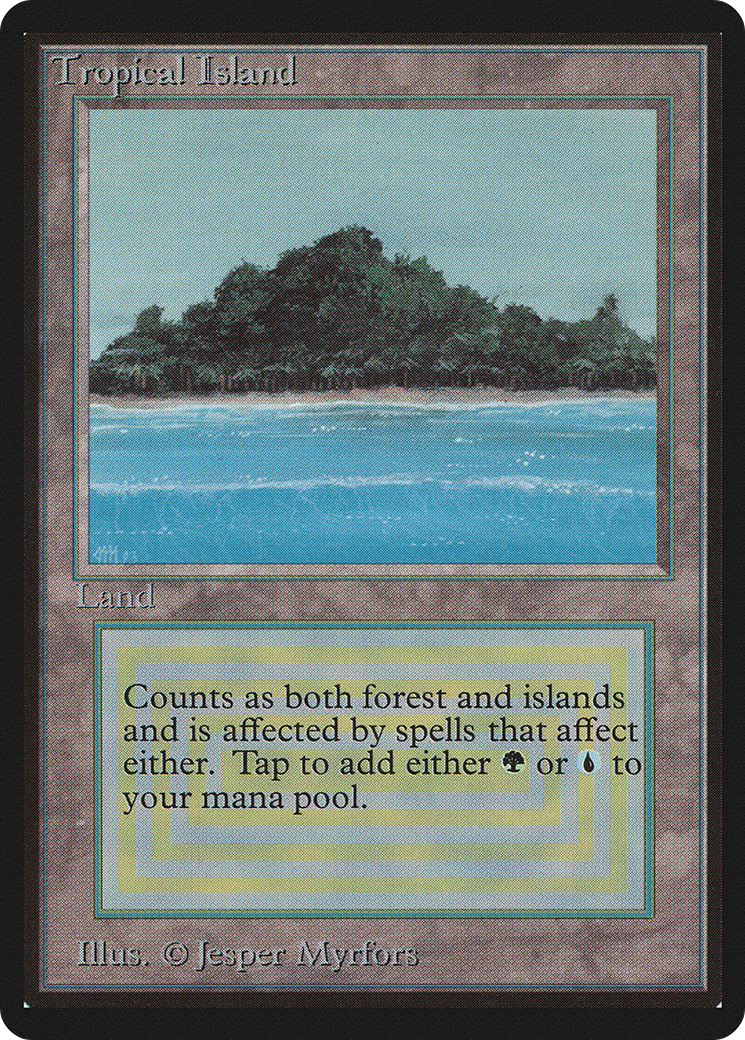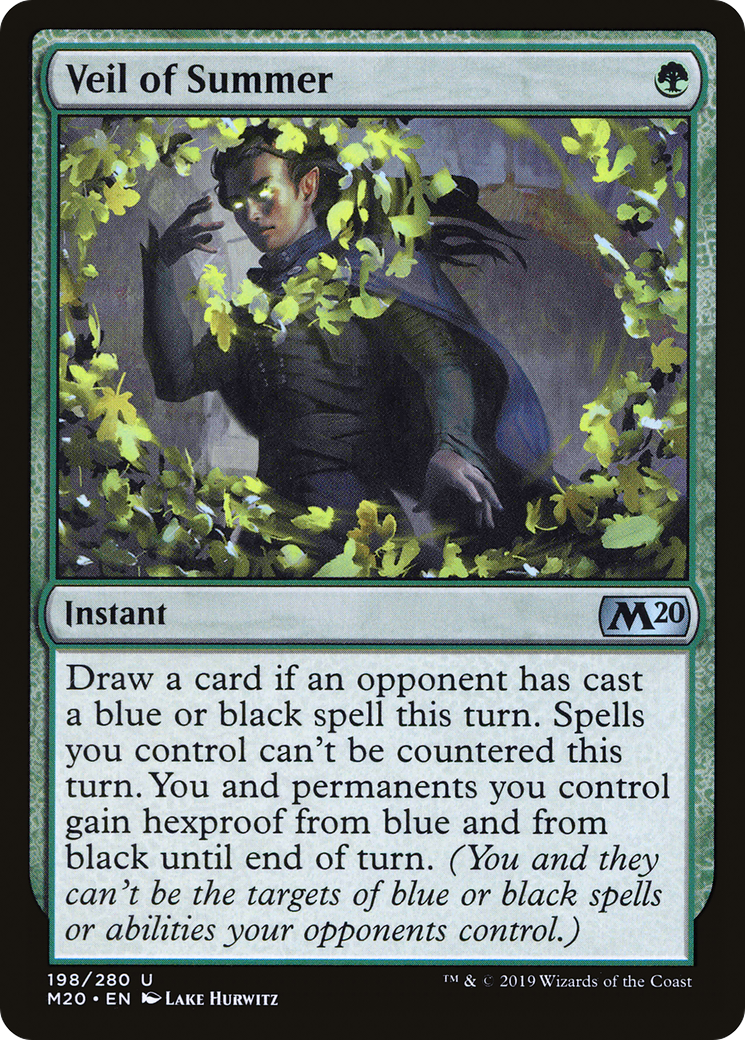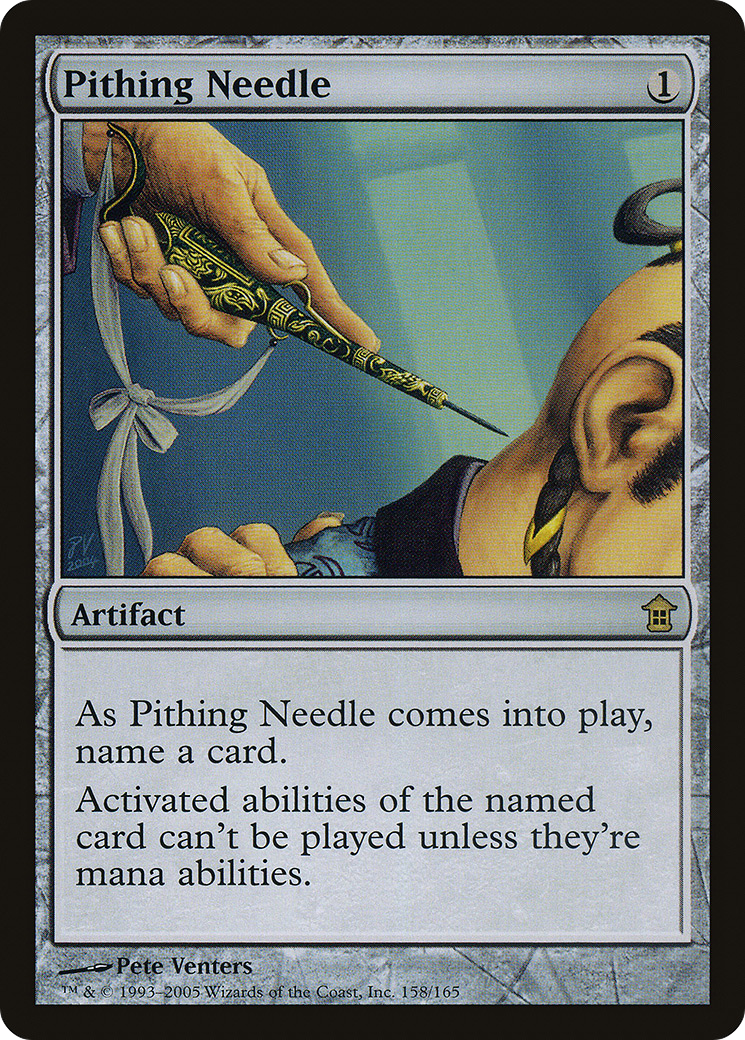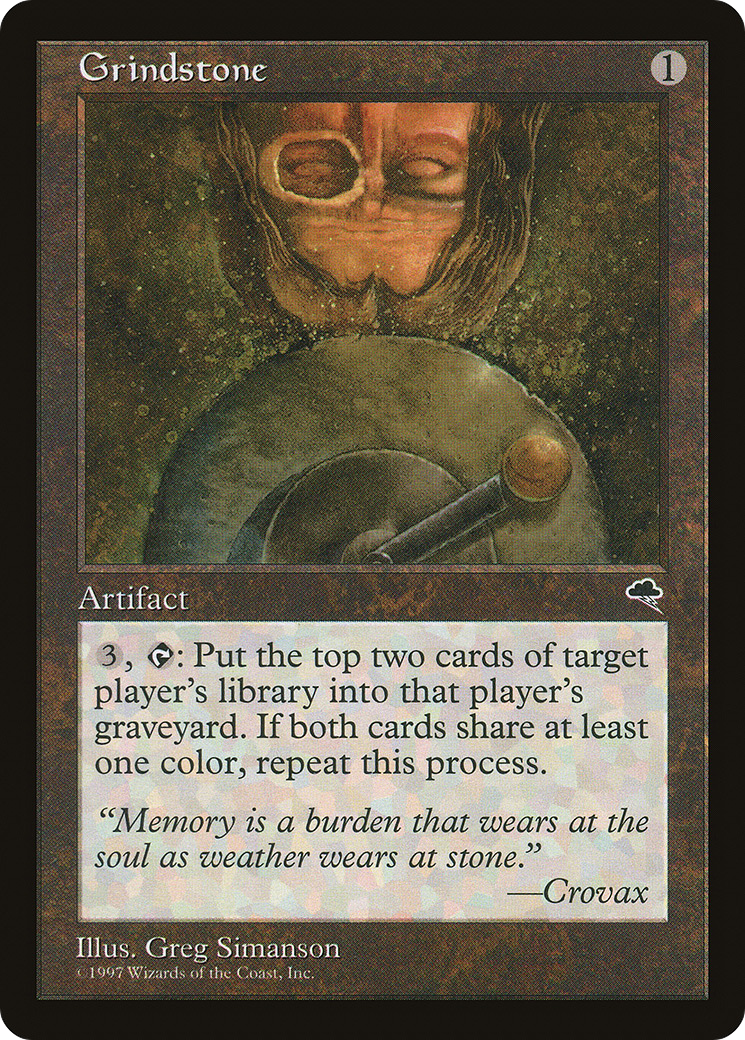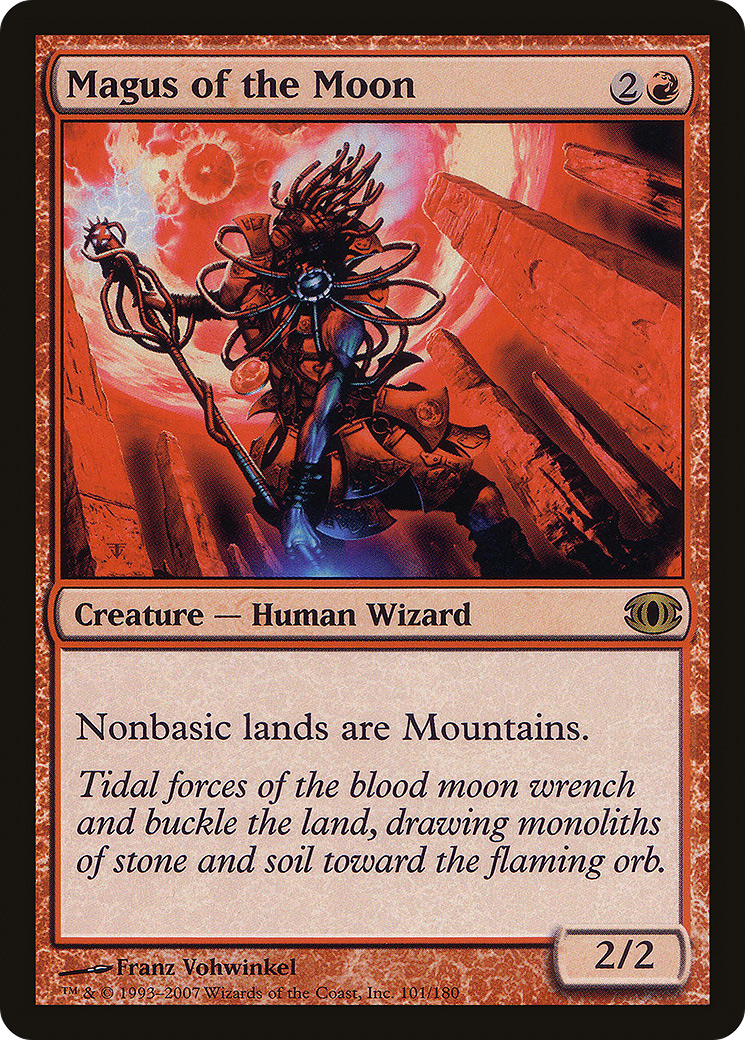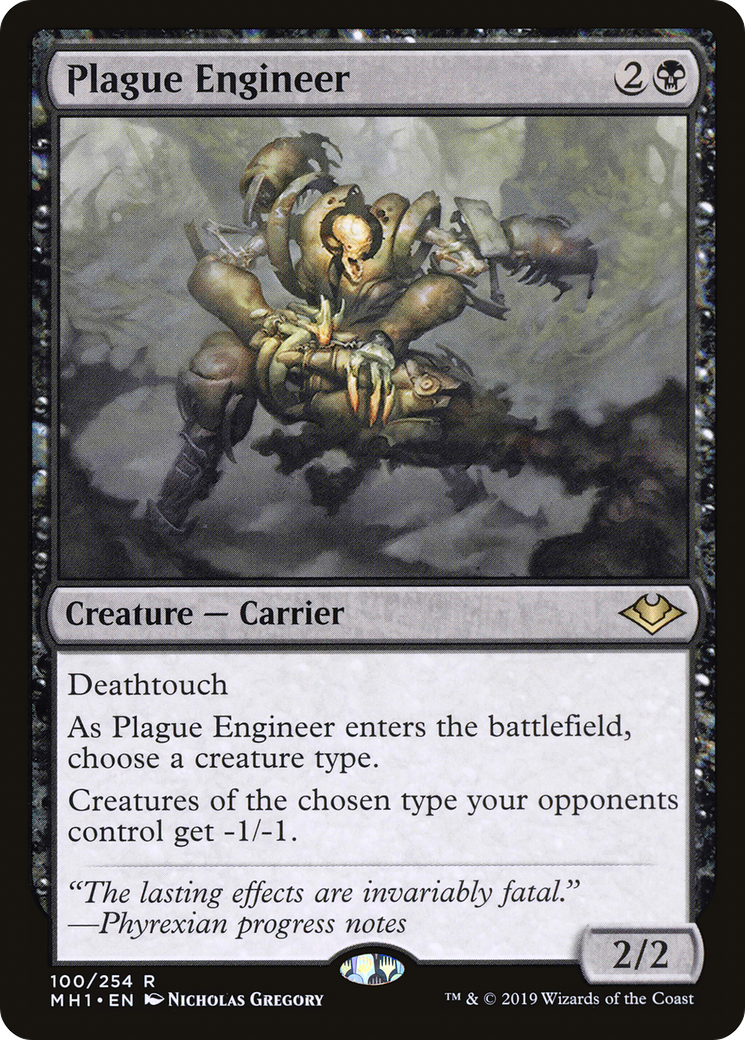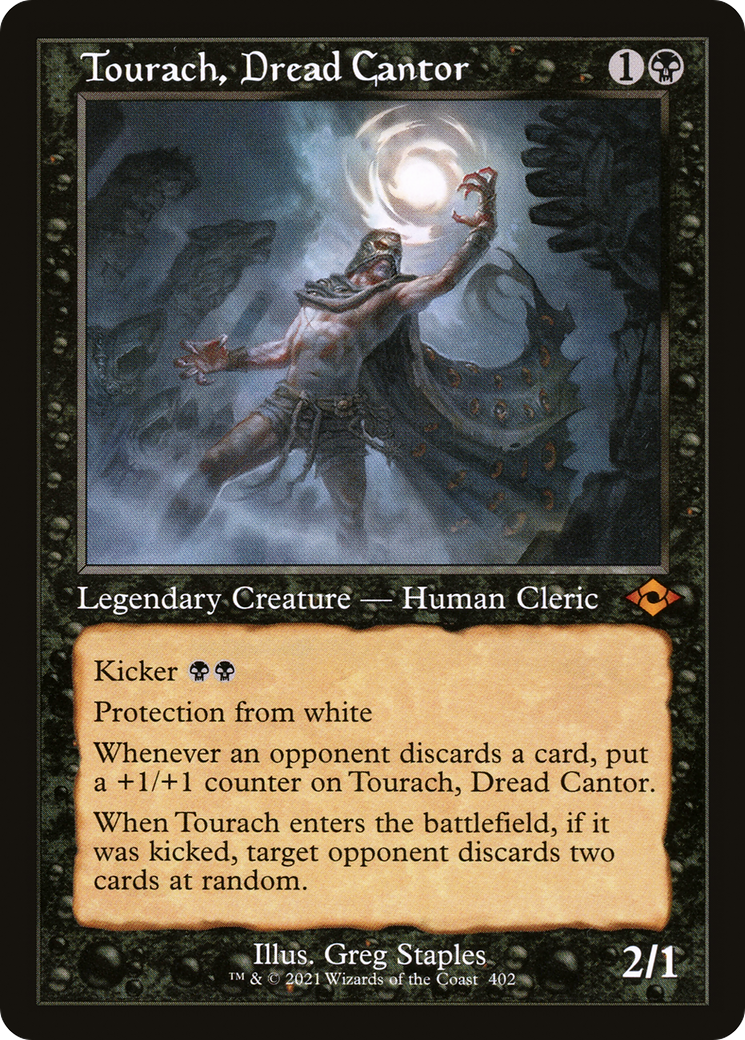2nd Place at Austrian Legacy Masters —Tournament Report
Hey everyone, Sigi here. Today is a bit of a rare exception here on PlayEDH.com. While we usually write about Commander-related topics, I’m making a guest appearance to talk about the format I’ve been playing a lot since last year: Legacy. Besides doing Admin work for PlayEDH and maintaining the Conquest format, I’ve decided to focus my efforts in the world of Magic on more competitive play.
At first, I tried out a bunch of different decks and didn’t really find my home in Legacy. Around October or November of last year, after a pretty miserable result with BG Loam Pox at a small local tournament, one of my friends from my playgroup told me that Cephalid Breakfast was picking up in popularity. Given my history with Breakfast Hulk in cEDH, I was immediately interested and started researching the deck. After putting it together and playing it at our usual Friday night meetup, I was hooked.
Here is an example of what Cephalid Breakfast looked like at the time. This is Silvio Corbari’s list that they piloted to a Top 16 at the 2022 4 Seasons Summer event in Bologna, the largest Legacy tournament series in Europe. If you’d like an introduction to the deck, one of its originators and professional Magic player Javier Dominguez has a great article about it here.
The basic combo for Cephalid Breakfast works like this:
Have Cephalid Illusionist and Nomads en-Kor or Shuko on the battlefield.
Target Cephalid Illusionist with the Nomads en-Kor or Shuko ability, creating a trigger that makes you mill three cards.
Keep activating the ability to mill through your whole deck three cards at a time, putting Narcomoebas into play whenever you find them.
Flashback Dread Return targeting Thassa’s Oracle by sacrificing three creatures while your library is empty.
You win the game when Thassa’s Oracle’s triggered ability resolves.
Let’s also take a look at some of the unique advantages that Cephalid Breakfast brings to the table:
The combo is very mana-efficient, since it consists of a two-mana card (Cephalid Illusionist) and a one-mana card (Nomads en-Kor, Shuko). This means that the deck is quicker at setting up its combo win than most other decks in the format.
It gets to play the blue core of Ponder, Brainstorm, and Force of Will, even coupled with access to Daze since the deck’s combo and threats are so mana-efficient. This core provides the deck with a high amount of flexibility that allows it to adapt to many in-game situations.
The Stoneforge Mystic package doesn’t just serve as a way to find combo pieces via Shuko. It also puts immediate pressure on the opponent by threatening a big Kaldra Compleat if it isn’t removed.
Build flexibility. When it comes to most combo decks in Legacy, the mainboard slots that can be changed to adapt to the current metagame are often very limited. Breakfast has a good number of flex slots, which has led to a high variety of successful builds. This ability to adapt means that—barring any massive format shifts—Cephalid Breakfast is here to stay.
All in all, Cephalid Breakfast is a so-called “False Tempo” deck that plays an interactive game with its opponent while constantly threatening to combo off, forcing the opponent to leave up mana and exhaust their resources. To those of you that have played Modern before, this will seem reminiscent of a now-banned staple from the days of Modern’s youth: Splinter Twin.
Now let’s take a look at how Cephalid Breakfast has changed since its inception and which build I ended up on for the tournament:
As you can see, there are some significant differences between Silvio’s list and mine. To be clear, most of these changes were made by the Breakfast community at large and they are not my individual innovations, but they’re still worth highlighting to get a better understanding of what the deck is and how it wants to position itself in the contemporary Legacy meta.
The first big change is in the mana base: Urza’s Saga. This card provides a strong backup plan via Construct beats while also being able to tutor for Shuko when needed. It does a great job of forcing the opponent to expend resources on things that aren’t Cephalid Illusionist. If you make full use of your Urza’s Saga, you end up with a 3/3 Construct and a 4/3 Construct that’s equipped with a Shuko.
That by itself is already a threatening clock that’s further supplemented by the aforementioned blue core of the deck. Especially in post-board games where we get access to removal via Swords to Plowshares and Prismatic Ending and opponents usually bring in a lot of graveyard hate, these Constructs can often be enough to carry us across the finish line without ever needing to combo off.
Speaking of graveyard hate, the second big change is the addition of Step Through from Modern Horizons. Its wizardcycling ability doesn’t just increase the frequency with which we can find Cephalid Illusionist, it also lets us grab Thassa’s Oracle in situations where we don’t have access to our graveyard-based combo. On top of that, it also pitches to Force of Will when we need it to.
The third big change is the addition of Teferi, Time Raveler. Teferi just kind of does everything in one card. It removes graveyard hate, which allows us to go for a combo win, it can also remove opposing threats, which buys us more time to find what we need to close out the game, it replaces itself when we bounce something, and it stops our opponents from casting anything during our turn, thereby protecting our combo from interaction. Especially against control decks, Teferi is a card they are forced to either counter or remove right away. While it is the most expensive spell in our deck at three mana, that cost is well worth it in a wide range of matchups.
These three new cards, along with the replacement of Batterskull with Kaldra Compleat to make the Stoneforge plan more threatening, have become staples in most Breakfast builds since then. At the same time, we’ve also seen people play around with those flex slots I mentioned earlier. During the time when Mono-White Initiative with White Plume Adventurer and UR Delver with Expressive Iteration took the format by storm, many players (myself included) tried out Baleful Strix instead of Stoneforge Mystic. Around the release of Phyrexia: All Will Be One, Breakfast players switched those slots over to Staff of the Storyteller to gain access to a consistent draw engine while also buffing the Construct plan. Here’s an example of a recent Staff Breakfast build from Brian Coval.
In this build, we also see all of the changes I discussed before. However, I must admit that I’ve never been much of a fan of the Staff Breakfast build. Two of these reasons existed before the release of the Lord of the Rings set, and the third is Orcish Bowmasters being printed.
Most Staff Breakfast builds don’t play Daze. In my opinion, Daze is an incredibly powerful card that fits well into the Breakfast shell. Having 3-4 additional ways to protect your combo without having to pay mana is something I don’t want to miss.
This goes back to the “False Tempo” archetype I mentioned earlier. This archetype works by taking complete control over the pace of the game. Our opponent has to worry about what we’re going to do on every single turn. When our turn consists of playing a Staff of the Storyteller, we give up all of that pressure. Compare this to playing a Stoneforge Mystic and finding a Kaldra Compleat. Suddenly, our opponent is on the back foot. They need to interact with this Stoneforge Mystic and prevent Kaldra Compleat from hitting the board or they’ll be dead in a few turns. If they have removal, that’s fine—we got a two-for-one out of it while running our opponent lower on means to interact with our combo. The secondary effect of this is that in blue mirrors, keeping up this kind of pace puts a massive strain on each cantrip our opponent casts. Over a few turn cycles, this kind of pressure will break our opponent, and that’s where we can comfortably go for the win.
With all that said, there is one thing I really like about the Staff Breakfast builds: Orim’s Chant. Especially after the printing of Orcish Bowmasters, having more ways to shut off opposing instant-speed interaction when we want to go for our combo felt like the right thing to do, so I adopted this tech for my own list. During testing, I even went a bit deeper and tried one Tropical Island in the main plus two Veil of Summer in the sideboard since I was also concerned about an uptick of discard effects following the increased popularity of black thanks to Orcish Bowmasters, but that plan didn’t end up working out. The one card I wish I could play the full four copies of is Daze, but something had to give to make this a 60-card deck. I briefly tried playing only three Ponders, but the whole foundation of how this deck is built and what I can get away with is four Brainstorm and four Ponder, so that change didn’t stick either.
With the mainboard being done, all that was left was putting together the sideboard. I had 12 slots that were basically set:
3 × Swords to Plowshares
3 × Prismatic Ending
2 × Surgical Extraction
2 × Force of Negation
2 x Serenity
With these 12 slots, I started working on a sideboard guide. The most useful part of that was that it helped me figure out where I still had sideboarding “holes” that needed to be filled, and which matchups my sideboard was not prepared for properly. After going through all of that, the final three slots I ended up on were:
1 × Pithing Needle
1 × Hydroblast
1 × Flusterstorm
With Pithing Needle, I really wanted an Urza’s Saga target that could further buff my Constructs if games went long while also needing some extra help against Mono B Helm and Painter. When playing against Painter, I identified that the spots where they usually beat us are when they can start doing Goblin Welder stuff. Pithing Needle shuts that off entirely. When it comes to Painter, I’m usually not concerned about their Grindstone combo, so while naming Grindstone with Pithing Needle does come up, I tend to prefer an approach where I control their access to Goblin Welder or Goblin Engineer. Pithing Needle also does a great job of shutting off Sneak Attack in the Sneak n Show matchup. On top of that, it helps us keep up in long games against Control by naming The One Ring. Finally, one of the few cards that Breakfast can do almost nothing against is Faerie Macabre. Pithing Needle can answer that.
My main thoughts behind Hydroblast were the RW Initiative deck leaning harder on red thanks to Forth Eorlingas!, wanting something that allows me to remove a Blood Moon or Magus of the Moon without having to fetch a basic Plains, and ways to efficiently interact with decks that board in Pyroblast against us.
Flusterstorm helps not just against most other fast combo matchups like Storm and Doomsday, but also against Tempo and Control decks. In those latter matchups, I usually board out Force of Will since it’s quite card-inefficient, and Flusterstorm allows me access to an efficient counterspell that’s difficult for them to deal with. In some way, it’s a slightly different third copy of Orim’s Chant.
With that done, you can read my full sideboard guide here.
Now, let’s get to the actual tournament. Austrian Legacy Masters was held in Linz, Austria on the 29th of July. 63 players attended, so we played six rounds of Swiss followed by a Top 8. The winner would receive an invite to this year’s European Legacy Masters, an invite-only tournament in Bologna, Italy where the best players in all of Europe compete for the title of European Legacy Champion. I visited my good friend, online playtest partner, and former PlayEDH staff member Kraum since we both competed in the event. In addition to regularly playing, both offline and online, my tournament preparation included the following:
Studying he aforementioned sideboard guide.
Making sure to eat, drink, and sleep properly both before and during the tournament
Having a clear plan for travel, accommodation, and other needs, so I could spend my time thinking about Magic instead.
Analyzing other people’s Breakfast games, writing down my thoughts and which plays I would’ve made on each turn, then comparing my notes to what those players ended up doing. Special thanks to our newest PlayEDH staff member Rebell here, since one of her tweets inspired me to do that.
Round 1 versus Death and Taxes, on the play:
My opponent in this round was a very young player who was attending the event with his father. I was really impressed by both his plays and how good his English was.
Game 1: My opponent took a mulligan to six. We had a bit of a back-and-forth where my opponent played an early Thalia, Guardian of Thraben and was able to find an Umezawa’s Jitte via Stoneforge Mystic. He equipped it to Thalia and got a swing in, which made it very difficult for me to combo off, since both of my combo creatures are 1/1s. However, I was able to use Teferi, Time Raveler to bounce the Jitte, which then created a window of opportunity to go for the win when my opponent wasn’t able to recast and equip Jitte on the next turn. I untapped, deployed my combo underneath Teferi protection, and won the first game.
Sideboard:
-3 × Daze
-3 × Force of Will
+3 × Swords to Plowshares
+3 × Prismatic Ending
Game 2: On my turn 1, I play Shuko. I really like Shuko as a turn 1 play since it’s much more threatening than most players realise. Having Shuko in play so early means that I can always threaten to combo off with just two mana instead of three. This is really good against Wasteland decks in particular, where I might be forced into playing a low-resource game. On turn 3, my opponent casts Recruiter of the Guard to find Faerie Macabre. This is something I hadn’t expected at all. At this point, I was ready to go off, but this Faerie Macabre was in my way. Luckily, I was also holding a Cabal Therapy in hand, so I fetched for Underground Sea on my next turn and cast it to get rid of the Faerie Macabre. From there, my opponent made some plays on their turn, leaving up one mana, so I was suspecting Swords to Plowshares. To be extra safe, I cast Orim’s Chant on my next turn before casting Cephalid Illusionist for the win.
1-0!
Round 2 versus UB Ring Control, on the draw:
Game 1: My opponent took a mulligan to six. Generally, Breakfast feels very good to play into most control matchups thanks to Daze, Teferi, Time Raveler, and Orim’s Chant, plus our high number of threats. The game ended up going how it usually goes against Control. I draw out some of my opponent’s interaction, then resolve an Orim’s Chant that lets me deploy my combo without fear of being interacted with.
At this point, I hadn’t seen much of my opponent’s deck. I saw a UB mana base and some interactive spells, but not much else, so I didn’t want to change my deck too much.
Sideboard:
-3 × Daze
+1 × Flusterstorm
+2 × Swords to Plowshares
Game 2: In this game, it took until turn 4 for me to find out what my opponent was actually playing. They cast and resolved The One Ring, which completely tapped them out. This is where I saw my window. I untapped, played my fourth land and cast Orim’s Chant. It resolved, so I deployed my combo and won the game.
2-0!
Round 3 versus UB Shadow, on the play:
Game 1: I was very lucky to not face any early discard effects in this game, which allowed me to go for a fairly quick protected win.
Sideboard:
-3 × Daze
-4 × Force of Will
+3 × Swords to Plowshares
+3 × Prismatic Ending
+1 × Flusterstorm
Game 2: My opponent puts on too much pressure too quickly and I die before I’m able to make a serious combo attempt.
Sideboard:
+3 × Daze
-1 × Step Through
-1 × Shuko
-1 × Orim’s Chant
Game 3: My opponent took a mulligan to six, which I felt gave me an instant advantage in these grindier post-board games. I set up my game plan to take advantage of them being down 1 card, so we had an interactive back and forth for a while as I slowly ran them out of resources. This allowed me to go for a protected combo attempt, which won me the game and match.
3-0!
Right before the tournament, Kraum asked me whether I was nervous, and I said, “Not really—if I’m 3-0 after Round 3, that’s when I’m gonna get nervous,” and well, here I was. At 3-0, about to start Round 4. And yes, this was, in fact, the point where I started getting nervous. This Round 4 was basically my win-and-in for Top 8. If I win this match, I will get paired into other players at 4-0, and we can choose to draw our next two rounds to guarantee that we’ll all be in the Top 8.
Round 4 versus Franz on Moon Stompy, on the draw:
Franz was a great guy. Very fun to play with, and we had some great banter both during and after our match for the rest of the day.
Game 1: I had no idea what I was playing against, but I knew that 4C Control was the most popular deck at the tournament, so I kept a hand that could play a decent game in that matchup: 3 Lands, Urza’s Saga, 3 Ponder. Unsurprisingly, I got completely run over by Moon Stompy before I could assemble much of anything. In hindsight, even without knowing the matchup, this is the kind of hand that you should always mulligan unless you know exactly what your opponent is on.
Moon Stompy is one of the decks I was agonizing the most over for my sideboard guide. It felt very tough to figure out, but I’m happy with what I ended up on.
Sideboard:
-1 × Urza’s Saga
-1 × Teferi, Time Raveler
-4 × Ponder
-2 × Orim’s Chant
-1 × Shuko
+3 × Swords to Plowshares
+3 × Prismatic Ending
+2 × Serenity
+1 × Hydroblast
Game 2: I have Force of Will for my opponent’s turn 1 Chalice of the Void. They try to protect it with Pyroblast, but I am holding Hydroblast to counter it. From that point, my opponent follows up with Fable of the Mirror-Breaker on his next turn and I breathe a sigh of relief because that means there’s no fast beatdown clock for now. At this point, my opponent is mostly out of cards and I am able to take a relatively quick win. Stompy matchups tend to focus a lot around the first two turns of the game, and I was able to weather the storm.
I made a few adjustments since I was on the draw again for game 3.
Sideboard:
-3 × Daze
+2 × Force of Negation
+1 × Ponder
Game 3: This one was a slog. My opponent opens with a Leyline of the Void. My opener contains a lot of interaction, which allows me to remove all of his early pressure. However, thanks to a Fable of the Mirror-Breaker token, my life total is still dropping steadily. and I’m low on lands. My opponent is completely out of cards, but I’m on 5 life, and he also has a Simian Spirit Guide in play now. I’ve had a Shuko in play for several turns now, holding both Cephalid Illusionist and Thassa’s Oracle in hand after seeing it with my 1-of Ponder earlier. I’ll be dead in two turns if I don’t do anything. I really don’t want to lose this game, so I go for the kind of line that I would never go for otherwise. I cast Cephalid Illusionist. It resolves since my opponent has no cards in hand. I start milling myself, throwing most of my deck into exile. After doing this, I have three cards left in my library. My opponent doesn’t quite understand what’s going on. But as he untaps, he realises and looks at me with dread in his face: “Oh, you’ve got Oracle in hand…”. I needed him to not draw a Pyroblast or anything else that could target my Illusionist. He moves to combat, swings at me, then passes the turn. I untap, draw down to 2 cards, and cast Thassa’s Oracle for the win. Franz congratulated me on my spot in the Top 8—it hadn’t quite dawned on me yet.
4-0!
I made it. I made Top 8. It was kind of unreal. I didn’t know what to expect from this tournament. I felt very well prepared, I was very comfortable with my deck, but this was the first time I was playing on an international stage. And here I was. A clean 4-0. Since I was locked for Top 8, I drew my next two rounds, which gave me a bit of time to calm down, eat something, and—most importantly—charge my phone.
Round 5: Intentional Draw
Round 6: Intentional Draw
From here, I went into the Top 8 as the third place seed. The Top 8 was played with open decklists, so everyone could see what exactly the other player was working with.
Quarterfinals versus Niccolo on Jeskai Control, on the play:
Niccolo was a lovely opponent, and meeting him was a real pleasure, we had a really fun chat throughout the entire match. I was a higher seed than Niccolo, which meant that I got to be on the play. I saw that Niccolo’s deck was quite heavy on Dress Down, so the approach I wanted to take in these games was to navigate my games in a way where his mana would be taxed enough that he wouldn’t be able to leave up two mana to cast Dress Down.
Game 1: My opener has the combo plus an Orim’s Chant. This is basically all I want in this matchup, so I go for a quick protected win.
Sideboard:
-2 × Step Through
+1 × Flusterstorm
+1 × Hydroblast
Game 2: Niccolo, being a Breakfast player himself, recognises how threatening a turn 1 Shuko is. Leaving that Shuko in play is a mistake other opponents often make, but he correctly used Prismatic Ending on it. This made it so I took too long to find another one of that half of my combo, so I wasn't able to present enough meaningful threats while he was able to accrue a lot of card advantage. Teferi, Time Raveler + instant speed Lórien Revealed is wild. The winning play was Forth Eorlingas! while I was at 11 life.
Game 3: For this game, I set up a multi-turn line of constant threats. On turn 2, I played Stoneforge Mystic, grabbing Kaldra Compleat. Niccolo did not remove Stoneforge Mystic here because he had a Prismatic Ending to remove the Living Weapon token. I put Kaldra Compleat into play on turn 3. On turn 4, I deployed Teferi, Time Raveler and bounced my Kaldra Compleat to threaten to bring it back into play via Stoneforge Mystic on my next turn. To be able to interact again, my opponent played Forth Eorlingas! for X=2 to be guaranteed to kill my Teferi, after which he only had a Tundra open, so there was no threat of Dress Down. I hadn't expected this specific answer, but was thinking of Prismatic Ending with 3 colours + Swords to Plowshares on Stoneforge Mystic. Both of those plays cost 4 mana, so it ended up being the same in that there wasn't enough mana left for Dress Down. All of this was to set up for my winning move: Orim's Chant with Daze protection into Cephalid Illusionist + Nomads en-Kor for the win.
Semifinals versus Timo on UB Shadow, on the draw:
Timo was the second seed after the Swiss, so I was on the draw this time. Funnily enough, I would’ve played against him in Round 5 if we hadn’t chosen the intentional draw as both of us were 4-0 at that point. Another very friendly player, and he had just come off a grueling 2-1 victory in his Top 8 match against UB Ninjas that felt like it took forever. This match was played on stream, so you can watch it here if you’d like.
Game 1: I have Dread Return, but I also see a basic land and a way to the combo in my opener. I’m a bit torn on this one, but once I see Timo taking a mulligan, I decide that having more cards in hand will be the way to punch through the discard effects that I’d usually expect from Shadow. Eventually, that Dread Return will be turned into a real card with something like a Brainstorm. I am delighted that my plan is already paying off when I see Timo going down to 5 cards. Timo opens on Thoughtseize, which I expected to some extent, and takes my Illusionist. I still have a lot of protection in hand, and Teferi, Time Raveler will let me survive whichever early aggression he decides to throw at me. Since my early plan for this game involves Urza’s Saga, I’m trying to get my basic lands set up before I commit it to the board. The later I get cut off certain amounts of mana, the easier it is for me to deal with. After a Brainstorm on turn 2, Timo follows up with a Grief, taking my Teferi. At that point, I had drawn another land, so my hand didn’t really advance from when he last saw it. However, Timo’s hand is also down to 2 cards right now. So on my next turn, instead of committing to the basic land strategy that was meant to safely get me to Teferi, I pivoted to playing out Urza’s Saga early so I would force Timo to continue reacting to what I was doing. Timo Reanimates his Grief, putting a clock into play and taking Orim’s Chant, my last piece of protection, as I had drawn yet another land. Rough topdecks so far. He also plays out a Death’s Shadow, leaving him with 1 card in hand. Now he has pressure on board, so if I am to win this game, I need to do it ASAP. I draw a Brainstorm, which will hopefully let me fix my hand by getting rid of this Dread Return and one of these extra lands. Brainstorm finds me a Ponder, so suddenly I’m digging up to 7 cards deeper this turn. Ponder also lets me protect an Illusionist from discard by placing it second from the top instead of drawing it right away. My Saga will let me find Shuko next turn, so this is where I want to go for the combo attempt. Ponder does not find me an Illusionist, so I shuffle. I draw Daze. Timo casts another Thoughtseize on his turn, buffing his Shadow and taking my Daze. At this point, I need to topdeck Cephalid Illusionist or I’m dead. Timo swings at me and I go down to 10. I untap, draw for turn, and there it is: Cephalid Illusionist. I find Shuko with Saga and play out the Illusionist to win the game.
A slight alteration to my usual sideboard plan against Shadow since I saw the Reanimate + Grief “scam” tech. This was more of an emergency plan and not something I actually recommend doing against these decks, but more on that later.
Sideboard:
-3 × Daze
-4 × Force of Will
-2 × Step Through
+2 × Surgical Extraction
+3 × Swords to Plowshares
+3 × Prismatic Ending
+1 × Flusterstorm
Game 2: I see basic Island, Stoneforge Mystic, the combo, and some interaction, so even if this hand gets hit by discard, I have a good range of options available. On top of that, I also have a Brainstorm that will either protect me against discard or hopefully find me more gas off the top of my deck. My mana is a bit unstable this time, so I’m hoping not to get hit by Wasteland. Timo plays Wasteland and goes for Thoughtseize on Turn 2, I cast Brainstorm in response, but he has a Daze for my Brainstorm. This hand is really awkward for Timo to deal with, so he tanks for a bit before taking Stoneforge Mystic. With the exception of my land situation, this is the exact kind of hand I want to have post-board in this matchup. I draw Nomads en-Kor on my turn 2 and decide to cast the other Nomads that was revealed with Thoughtseize. Drawing the second one allows me to expose the first one in a similar way to how I’d usually play an early Shuko. Timo land cycles on end step, which makes me think he has no more lands in hand, but wants to get up to 3 lands to cast a Plague Engineer, which would’ve been another reason why he didn’t take my Cephalid Illusionist with the Thoughtseize. He then untaps and uses his Wasteland on my Tundra, following it up with a Reanimate on the Troll of Khazad-dûm he had cycled. I untap and topdeck Ponder, which finds me a Tundra and an Urza’s Saga, so I cast the Swords to Plowshares in my hand and keep the Urza’s Saga as my second card in case Timo has another Wasteland. At this point, I’m very relieved that I could take Timo’s pressure off the board. Timo does indeed have a second Wasteland for my Tundra. I play Urza’s Saga, then I think for a moment before casting Cephalid Illusionist. Since Timo did not have any pressure on the board and nothing to Reanimate in his graveyard at this point, I felt like even if this is interacted with, I will be ahead if we go into a grind game. However, it resolves, and I start milling, expecting something like a Surgical Extraction. I’m hoping to hit Narcomoeba plus Cabal Therapy before exposing Thassa’s Oracle and/or Dread Return. I hit the former early, so now I’m milling towards Cabal Therapy to force the Surgical Extraction out of his hand while still keeping some cards in my deck. I put the Therapy on the stack, naming Surgical Extraction. Timo shows me his hand and scoops.
Finals versus Lorenzo on UB Scam, on the play:
At this point, I felt like I had achieved most of the things I had hoped for. I made Top 2, which guaranteed me one of the lands I still needed to finish my Breakfast deck: Tundra or Underground Sea. Lorenzo had already booked his flight for the European Legacy Masters, but still needed an invite. Since the event is happening in September and I’ll be busy with an internship, I decided to give him the spot regardless of the outcome of the match. Lorenzo is another lovely player from Italy, and his group and I had a little celebration in the metro back to the train station after the event concluded. Luckily, Top 8 was played with open decklists, because I had no idea what Lorenzo was playing before seeing his decklist. I was completely unprepared for this deck. This match was also played on stream, so you can watch it here if you’d like.
Game 1: Since I’m expecting a bunch of discard from Lorenzo and I’m on the play, I’m keeping a hand that can go turn 1 Brainstorm to protect against it. Lorenzo also has the Reanimate for his turn 1 Grief after taking my Brainstorm, so I feel forced to counter it, pitching my other Force of Will. At this point, I’m already feeling a bit uncomfortable with the current state of the game. While I did hide my combo pieces on top, I also have to expose a Tundra to Wasteland on my second turn. I cast Thassa’s Oracle to do something on this turn, since I can sacrifice it to a Cabal Therapy Flashback later and there’s no risk of having it exiled since I know Lorenzo’s decklist. This, however, was a poor play, as I forgot that I can’t keep both of my cards on top with Oracle. On my next turn, I play Shuko and equip it to Oracle, hoping that I would be able to go for a win with Illusionist on the next turn. However, Lorenzo finds another Grief, making me discard the Illusionist I had hidden with Brainstorm this whole time and followed it up with a Wasteland. At this point, I find my Underground Sea, so I cast it on Lorenzo, hoping that I would be able to hit more of his interaction. However, he was holding Fatal Push, which is not the card I had expected in this situation, and a Sauron’s Ransom. If I had hit on my first Therapy, I would’ve been in a great spot here since I would’ve left Lorenzo with nothing but a Troll in hand. But since it didn’t work out and I knew I would have to fight through an additional removal spell, I’m in a very tough spot. I still flashback the Therapy and take the Sauron’s Ransom, as I can’t allow Lorenzo to start getting card advantage here. From that point onwards, Lorenzo grinds me down with Mystic Sanctuary on Sauron’s Ransom while I never find my way back into the game.
Admittedly, I had no clue what I was supposed to sideboard here. Like in the previous match, I tried the Surgical Extractions as a way to deal with the Reanimate plan that was even more of a focus in this deck, but it wasn’t good. UB Scam requires a different sideboard plan compared to UB Shadow, but I couldn’t quite see it at the time.
Sideboard:
-3 × Daze
-4 × Force of Will
-2 × Step Through
+2 × Surgical Extraction
+3 × Swords to Plowshares
+3 × Prismatic Ending
+1 × Flusterstorm
Game 2: I keep a questionable 7, but having a few extra lands against this deck seemed decent. WIth this kind of hand, I do want to bait Wastelands from Lorenzo in case I can find an Urza’s Saga, so I open on Tundra into Ponder. No plays from Lorenzo on turn 1 make me relax a little bit. On turn 2, I cast another Ponder, but my deck isn’t cooperating after a mediocre keep. I shuffle, and manage to find a Stoneforge Mystic, which is very nice in this spot as I can start building pressure. I fetch to find a third land to be able to play Stoneforge Mystic around Daze. It resolves and I grab Kaldra Compleat. Lorenzo responds with a Fatal Push on Stoneforge on my end step. Given how slow Lorenzo’s start was and the number of lands in my hand, I thought that this might be the kind of game where I can get to a hardcast Kaldra Compleat. I untap, hardcast another Thassa’s Oracle, and play an Urza’s Saga. From here, I’m trying to build a board while I work my way up to Kaldra Compleat. However, my plans are foiled as Lorenzo casts a kicked Tourach, Dread Cantor that hits Dread Return and Kaldra Compleat. On top of that, all of my interaction for this Tourach besides blocking is white, so it’s not easy to get off the board either. We enter into a race situation where I’m hoping to get some additional points of damage in by swapping my Shuko around, but I make the mistake of not committing to the race properly. Combat has always been my biggest weakness in Magic, and that weakness came back to bite me here. This situation favours Lorenzo’s deck with the amount of interaction it has post-board, but I didn’t recognise that. Lorenzo found Sauron’s Ransom and additional interaction, which was too much for me to deal with at this point. I extend my hand to congratulate Lorenzo on his victory.
So there I was. Top 2 at my first ever international Legacy Event. I really, really wanted to do well at this event, and all the preparation ended up paying off. I was happy with my build of Cephalid Breakfast, and I played well up until the Finals. While I didn’t get first place, I did win this sweet Tundra as my prize.
Most importantly, I had fun the whole day and I met some really amazing people. Starting with Kraum, who kindly offered to accommodate me during the tournament, to all the wonderful people running the event, to my fellow competitors who were a blast to play games and connect with all day long.
There’s one final question left to answer: Where do we go from here? This goes for both the deck and myself. When it comes to Breakfast, I’m still happy with what my maindeck looks like, but I’m planning to make some adjustments to my sideboard. With Shadow being the new premier Tempo deck in the format and both Scam strategies and Discard being on the rise in general, I’ve identified two potential avenues to combat these strategies that I’m planning to test soon. The main problems these decks present for Breakfast is that they can pick our hand apart while also applying lots of pressure on the board.
While I was already testing Veil of Summer for that first issue, it made the deck too fragile and Veil of Summer didn’t help me against turn 1 discard when I was on the draw. However, Leyline of Sanctity does protect me against discard all game long. The idea is that committing one card in my hand to turn off the main angle of disruption for these decks should end up being worth it.
To deal with life total pressure, I am interested in trying out Absolute Grace. This idea works in two ways. The first one is that I can comfortably block everything from these decks that isn’t a Murktide Regent, and the other one is that it will turn off all of their removal. This, in turn, allows me to commit my combo pieces to the board early on since they are now safer there than they would be in my hand. I’m not sure how these two ideas will end up playing out in practice, but I’m keen to give them a try.
When it comes to me personally, I want to start participating in more international Legacy events from now on. The community is amazing and I really enjoy going head to head with some of the legends of this game. Who knows, if anyone reading this is also into Legacy, maybe we’ll see each other in Bologna next year.
Finally, a massive thank you to my playgroup for cheering me on and putting up with my Breakfast nonsense every week for months on end now, to Kraum for accommodating me, testing with me, and being an all-around wonderful person, to the Austrian Legacy League for hosting such an amazing tournament, to the lovely people I met at the tournament, the Breakfast Discord for being a welcoming place with lots of people who love the deck, and to PlayEDH for letting me post this tournament report. The community is what’s keeping Legacy alive, and if there’s anything I can say after this weekend, it’s that Legacy is alive, thriving, and just so much fun right now.
Articles like these are made possible and kept ad-free due to the support of all of our Patreon, Twitch, and Discord subscribers. Come check us out on Discord to chat about all things Commander and play curated games with people from all over the world! You can also find us on Twitter X if you want to keep up to date on our latest news and article releases. If you want to talk to Sigi about Legacy, you can find him right here.
“This article is unofficial Fan Content permitted under the Fan Content Policy. Not approved/endorsed by Wizards.
Portions of the materials used are property of Wizards of the Coast. ©Wizards of the Coast LLC.”
